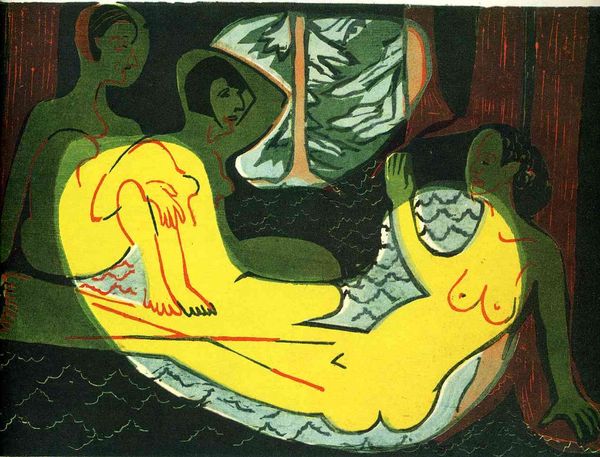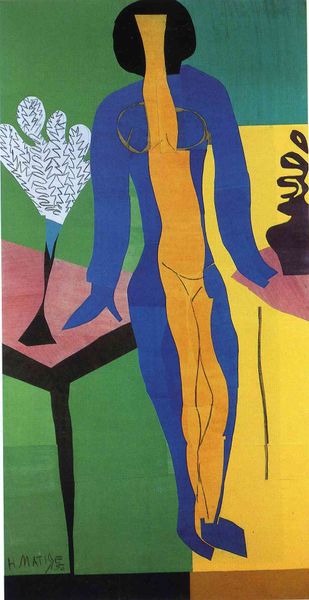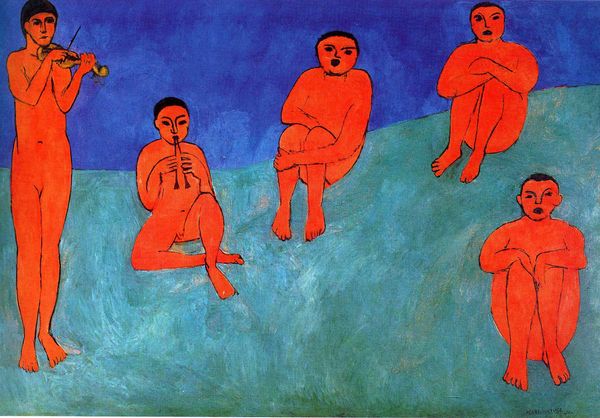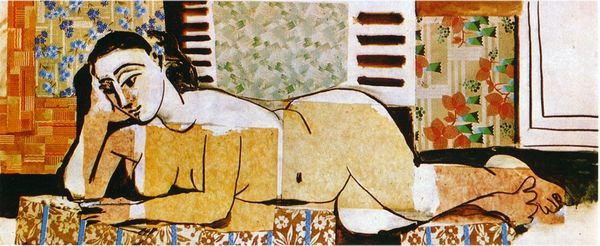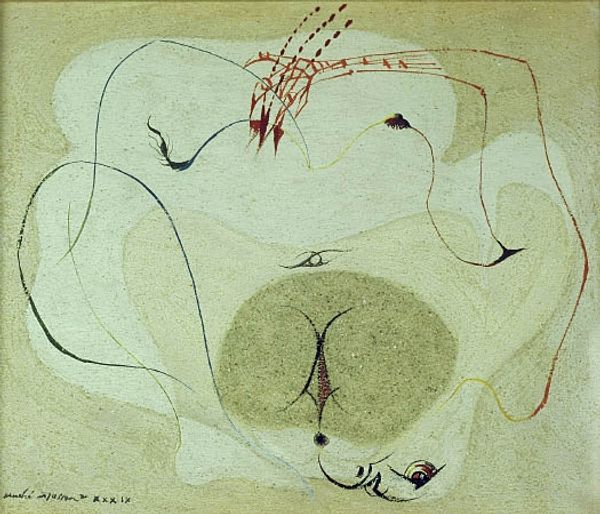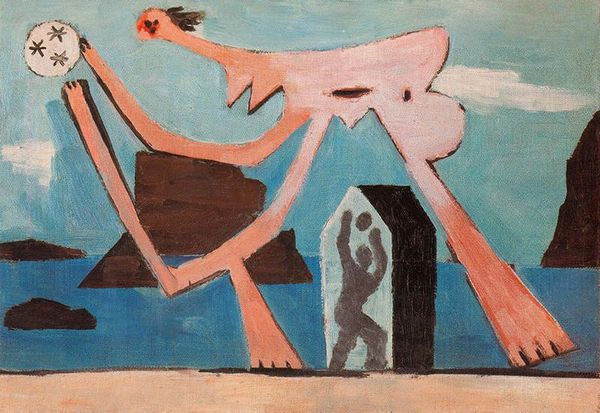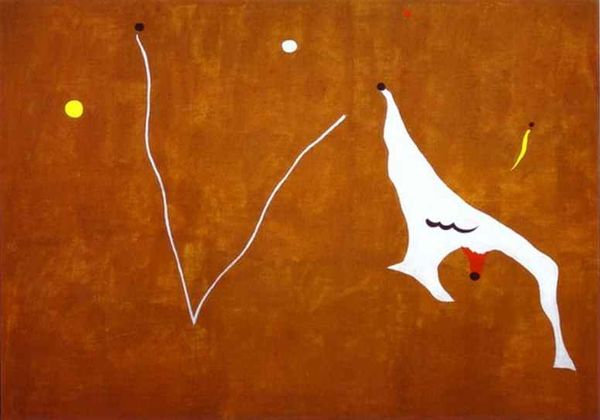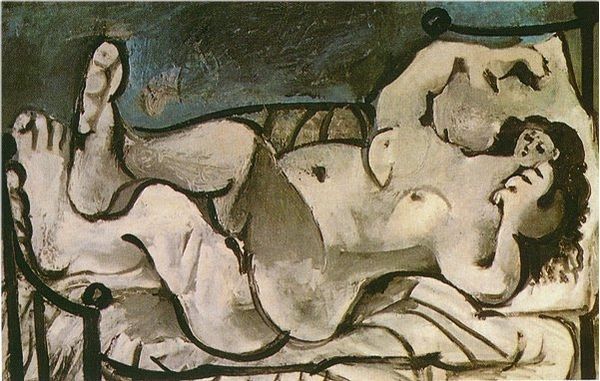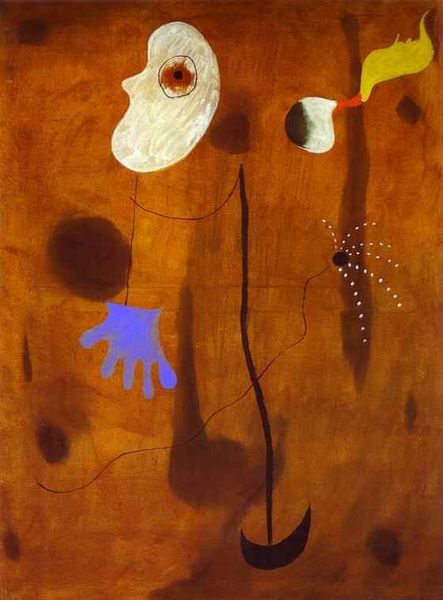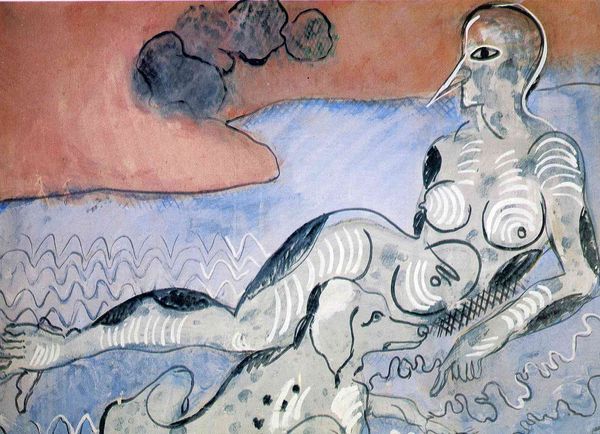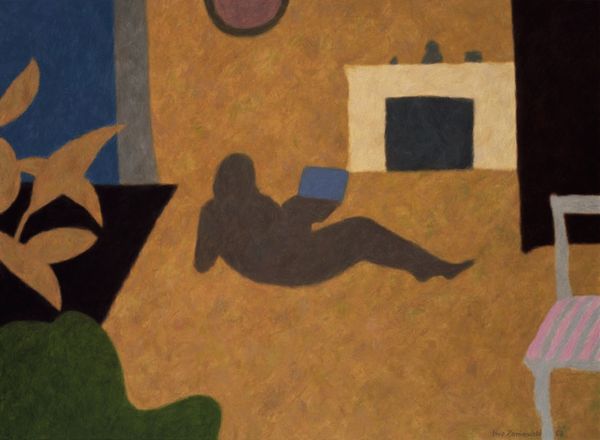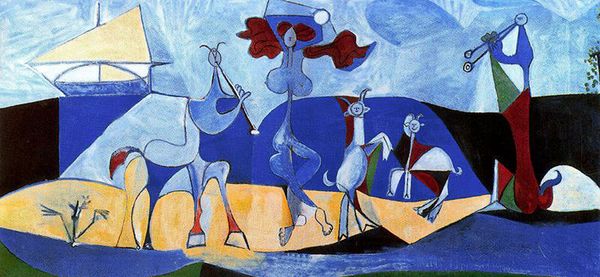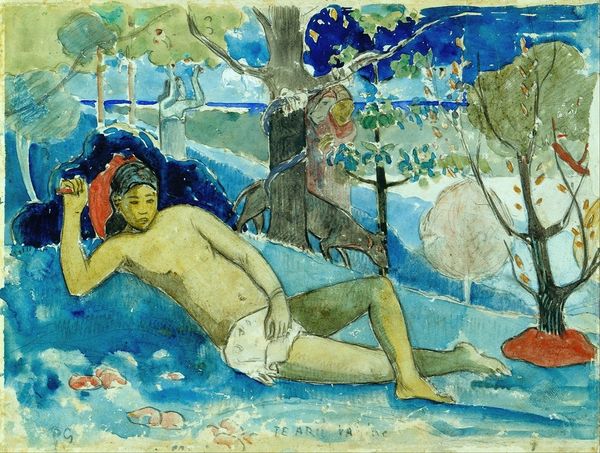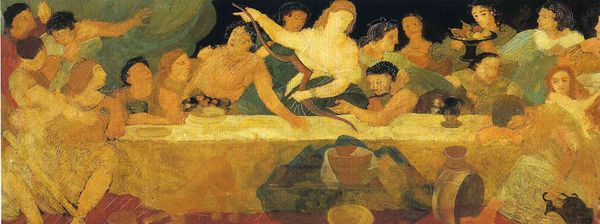
Dimensions: 176 x 210 cm
Copyright: Public domain US
Curator: Ah, stepping into this room feels like entering a hazy afternoon dream. It's Henri Matisse's "Arabian Coffee House," painted in 1913. The Hermitage Museum graciously shares this pastel-colored reverie with us. Editor: My first thought? Tranquility. It's almost minimalist in its rendering. A pervasive blue flattens the space, punctuated by these lounging, vaguely human forms and their strangely luminous orange limbs. It seems deliberately, delightfully unfinished. Curator: Unfinished perhaps in execution, but not, I think, in intent. What we perceive is a masterful condensation, a distillation of lived experience and of memory, maybe, of that journey to Tangier he took. You sense it too? Editor: I sense that Orientalist fantasy alright. I mean, let’s decode this: the dark vertical accents framing the composition are abstracted arches, clearly evocative of an “exotic” architecture. The bodies are simplified almost to glyphs. Is Matisse subtly deconstructing our gaze, inviting us to question how we consume the “Orient”? Curator: Maybe... but I feel he's less interested in deconstruction and more so in transcribing a felt reality—the sun-baked stillness, the heavy perfume of blossoms, and languid postures during a drowsy afternoon... he just grabs all that juicy atmosphere with a brush, trying not to let the reality get in the way. Editor: Reality definitely bends here! That fishbowl for example, it becomes almost surreal—suspended between detail and ghostly outline. Curator: Precisely! It hovers—a dream bubble, really. And those figures! Reduced to essential forms. Their orange limbs jut out of their loose robes like some delicious marmalade oozing out of porous croissants! Matisse asks us to perceive not merely the appearance of the scene, but the sheer luxurious *being* of it all. Editor: Alright, marmalade croissants aside, this certainly highlights Matisse's formal inventiveness, reducing representation to almost hieroglyphic forms while amplifying color and pattern into the dominant language. It is a truly remarkable act of translation of experience onto canvas. Curator: Couldn't have said it better myself. It leaves me yearning for a never-ending afternoon under that bright African sun!
Comments
No comments
Be the first to comment and join the conversation on the ultimate creative platform.
